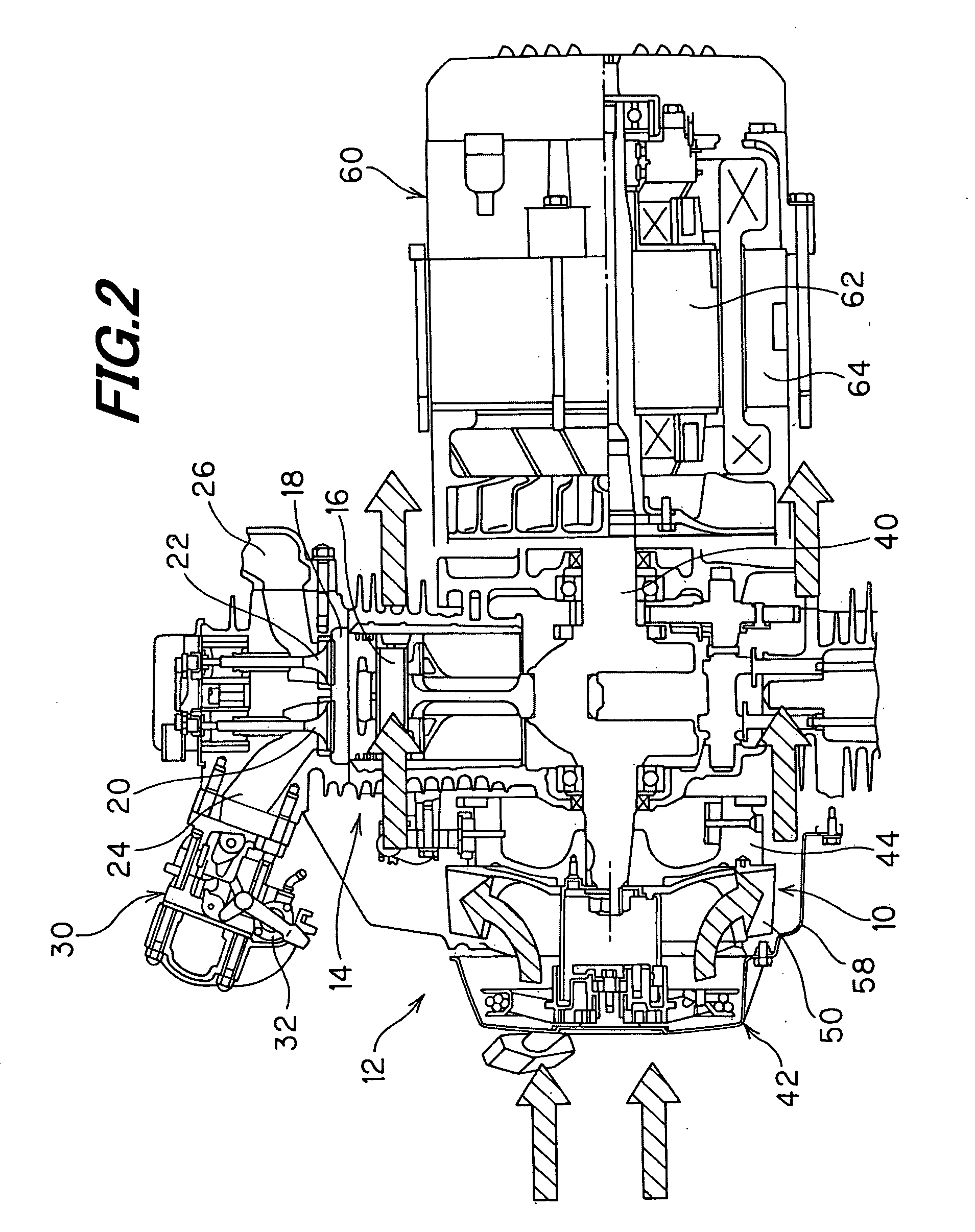Multi-blade fan for air-cooled engine
a technology of air-cooled engines and blade fans, which is applied in the direction of liquid fuel engines, vessel construction, marine propulsion, etc., can solve the problems of increasing the number of components, increasing the cost, and less efficient and noisier than the turbofan, and achieves the effects of large air volume, less efficient and noisier, and small siz
- Summary
- Abstract
- Description
- Claims
- Application Information
AI Technical Summary
Benefits of technology
Problems solved by technology
Method used
Image
Examples
Embodiment Construction
[0021] A multi-blade fan for an air-cooled engine according to a preferred embodiment of the present invention will now be explained with reference to the attached drawings.
[0022]FIG. 1 is a side view showing the multi-blade fan for an air-cooled engine according to the preferred embodiment of the invention together with the engine it is attached to.
[0023] The reference numeral 10 in FIG. 1 designates the multi-blade fan for an air-cooled engine. The multi-blade fan 10 is attached to an air-cooled internal combustion engine 12. The engine 12 is a four-stroke, single-cylinder engine with a displacement of 196 cc.
[0024]FIG. 2 is a sectional view taken along II-II in FIG. 1.
[0025] The engine 12 has a cylinder 14 accommodating a piston 16 that can reciprocate therein. An intake valve 20 and an exhaust valve 22 are provided to face into a combustion chamber 18 of the engine 10 for opening and closing communication of the combustion chamber 18 with an intake pipe 24 and an exhaust pip...
PUM
 Login to View More
Login to View More Abstract
Description
Claims
Application Information
 Login to View More
Login to View More - R&D
- Intellectual Property
- Life Sciences
- Materials
- Tech Scout
- Unparalleled Data Quality
- Higher Quality Content
- 60% Fewer Hallucinations
Browse by: Latest US Patents, China's latest patents, Technical Efficacy Thesaurus, Application Domain, Technology Topic, Popular Technical Reports.
© 2025 PatSnap. All rights reserved.Legal|Privacy policy|Modern Slavery Act Transparency Statement|Sitemap|About US| Contact US: help@patsnap.com



